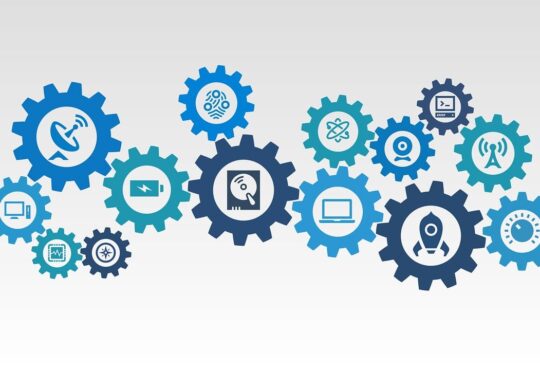
Erkan Dervis is the Director of Digital Channels (IT) of Fibabanka. The article discusses the open banking approach to finance.
Nowadays, the customer wants instant success. When customers face a problem, they want the bank to resolve it before they call it. There has been a very rapid transformation during the pandemic. We suddenly found ourselves in a technology-based lifestyle in the middle of the pandemic. Customer behaviors have also changed to support the shift of life to digitization. Sometimes customers may want to access banking services via their phone or their favorite loyalty or coffee shop application instead of banking channels. For example, customers who work with more than one bank may also want to manage their consolidated accounts from a single application offered by a bank or a third party.
The open banking approach takes internet banking and mobile banking further. It allows customers to simultaneously view and transact financial data from more than one bank or financial institution on a single screen.
Open Banking
Open banking is similar to banking as a service because it also leases banking services to non-bank organizations.
Banking as a service allows third parties to offer pure banking products via their interface. Open banking grants access to clients’ data with their consent without transferring banking functions.
Open banking is a part of the open innovation model. It comes with the growth of technology and changing attitudes toward ownership of user data. With the release of PSD2, banking data is now available through public API, which kickstarts the rise of new FinTech initiatives gainful for service providers, developers, or end users. Banks have to share their customers’ data and services with trusted third parties with customers’ approval. Banks can open their services to the outside world through API technology, where the customer’s data will be the owner.
Banking as a Service
Banking as a service (BAS) is an innovative B2B service allowing banks to lease their infrastructure. Banking as a service. Clients are big holdings, retailers, FinTech startups, and other organizations that wish to carry out finance operations but want to avoid organizing or building their own bank.
The banking as a service model is similar to renting cloud resources from third-party providers, like Amazon Web Services or Google Cloud. The renters themselves choose what tools to use. BAS users can perform standard banking operations using these instruments in their app. For example, they can implement balance checks and online payments without directly interacting with the bank.
Now banks show a good example of banking as a service in action. In most cases, they are not stand-alone organizations but add-ins on top of traditional banks. Usually, banks do not issue loans or participate in large financial operations. Instead, they succeed in short-term loans, quick deposits, and partnerships with well-known retailers.
This model allows any business to run banking operations through its interface. For example, if you have a restaurant or a retail shop, you might offer branded debit cards and reward users for using them. You can also analyze spending behavior and use this data to improve your marketing strategy. Another idea is to give an online loan to purchase your goods and services. This would help you raise customer loyalty and build brand confidence.
Platform Banking
Platform banking is quite the opposite of banking as a service and open banking. Unlike previous models, the bank doesn’t share its infrastructure but integrates other firms’ services in its own app.
The traditional bank model is outdated to compete with more progressive and agile companies. It is inferior to advance FinTech services in terms of innovation and a variety of in-app perks. In this situation, big banks risk losing customers. Hence they are investing in technology and adopting external tools to enhance UX.
Without leaving your mobile application, you can purchase textiles, household appliances, electronics, flight tickets, movie tickets, etc. For example, a user who wants to buy a house uses a loan from the bank. They will also buy furniture on the same digital platform.
FIBA bank in Turkey recently cooperated with Turkey’s largest digital and physical technology shopping company in mobile applications. With the FIBA Bank mobile application, customers can purchase electronic devices such as notebooks, monitors, tablets, and desktops via a loan with just a few clicks.
PSD2 Timeline
In October 2015, the European Parliament updated the PSD (Payment Service Directive) rules and published PSD2 rules.
In August 2016, the UK CMA (Competition and Markets Authority) made a decision concerning the nine largest UK banks. With this decision, third-party companies registered in the open banking system could directly access data up to the level of the account transactions.
Position of countries in Open Banking
Based on their approach, countries can be divided into three sections –
- Pioneer Class– Sweden, England, Netherlands, USA, and Singapore. These countries have a high degree of readiness and the potential to drive open banking forward.
- Conservative Class – Brazil, India, Italy, and South Africa. Countries have less potential and less preparedness.
- Follower Class– Australia, Belgium, France, Germany, and Spain
Turkey’s position in open banking
Open finance has been on the agenda in Turkey since 2013. The regulation has been introduced, the legal infrastructure has been completed, and the law was finalized on 1st January 2020.
Open banking services in Turkey are regulated and supervised by the Central Bank of the Republic of Turkey. By law, providers that offer open banking and payment services must obtain authorization from the Central Bank. Turkey is one of the first countries to implement the PSD2 directive outside the European countries as of 29th December 2021. Regulations regarding the service banking model were announced in the official newspaper. Service banking will only be able to provide service model banking services to domestic interface providers and only within the framework of its own operating permits. Banks will not be interface providers.
Summary
If there is a gap between the technology and the customers, you may miss the customers. For this reason, you should appeal to the customers with the right solution and technology at the right time. Discover your strengths and weakness. Beware of your weakness and develop your strengths.
We also need to collaborate and cooperate with FinTech or technology companies to compensate for our weaknesses.
Macro-objectives of open banking
- Developing financial products and services.
- Increasing transparency and competition in the financial sector,
- Facilitating financial life.
- Increasing financial inclusion Improving customer experience.
Advantages for Customer
- Decrease in product and service costs with increasing competition and innovation by banks
- Speed
- Convenience and accessibility
- Improved alternative products, more options, opportunity to compare
- Personalized products
- Accessibility to products and services
- Lack of strict rules.
Advantages to the Bank
- Gain customers without using too much of their own resources
- They can provide a depth of services to their customers.
- They can offer a new generation of products and services to customers in a short time.
Advantages to FinTechs
- Increase the transaction volume
- Reduced operational burdens in corporate integrations and gain through API economy.
- Benefit from the infrastructure know-how
To conclude, although open banking has entered our lives with the field of payment services, its current position is far beyond this. It would not be wrong to say open banking isn’t just a concept. It shapes the future of an open banking ecosystem. Banks are already investing heavily in the concept of open banking, which benefits the entire ecosystem due to the possibility of bringing the non-bank segment into the system and increasing service quality.









